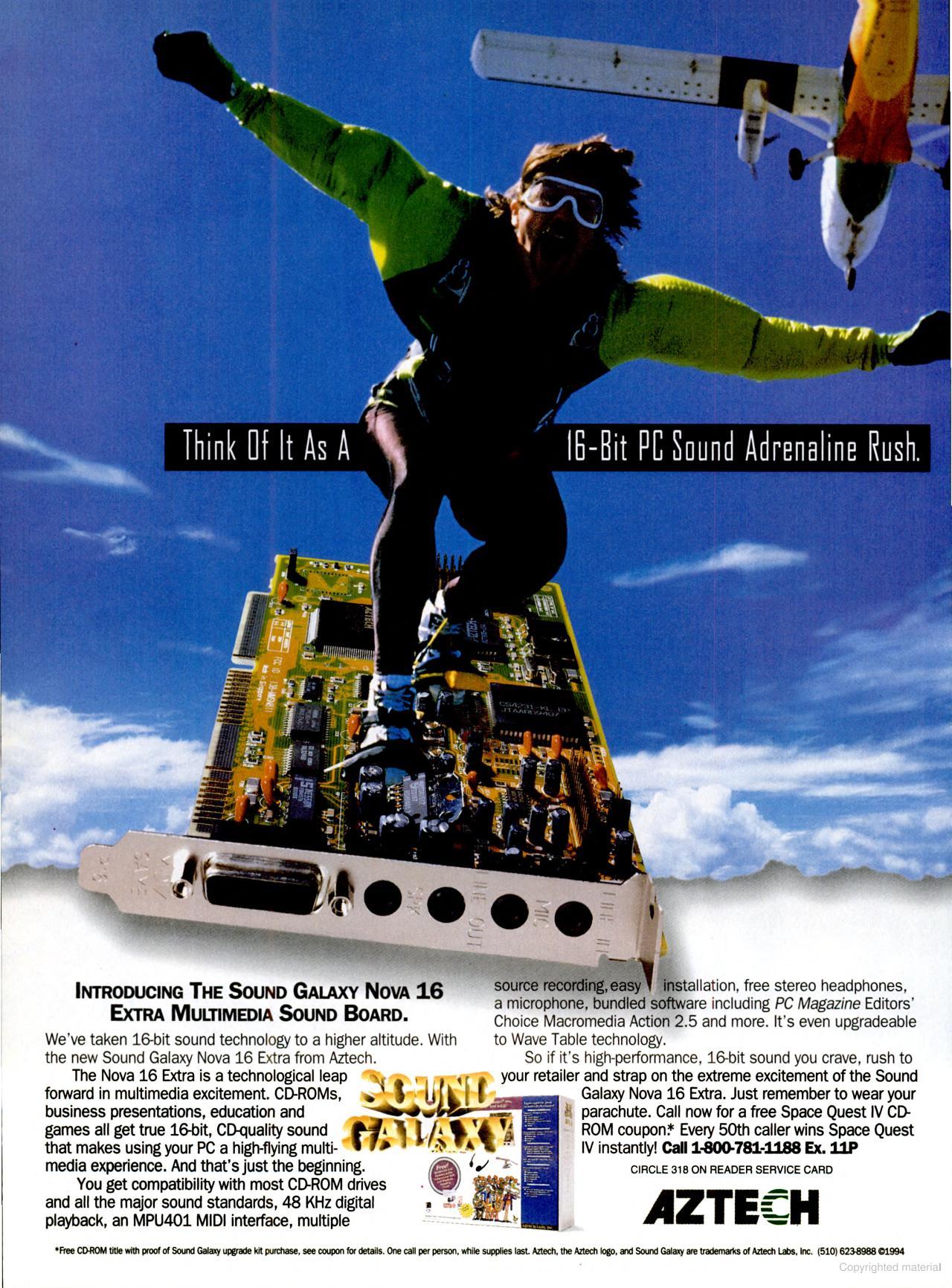Retro Review: Aztech Sound Galaxy Nova 16 Extra
11th October 2021
Another sound card retro review, for today's show & share I bring the Aztech Sound Galaxy Nova 16 Extra - sounds good right? Let's see.
Aztech Sound Galaxy Nova 16 Extra (ca. 1994)
Bought in October 2021 for £25
I occasionally look around for a good deal on Creative and Aztech sound cards - prices for these old ISA cards are on the rise, and they have been doing so for a good few years. Usually my search leads to nothing, but this one came up the other day for a good price. I get the impression some folks selling these assume they are of lower value or poor quality because they have Packard Bell labels all over them. PB was a brand more prominent in the US (and it was a bit of a budget brand), but we had it in the UK too later on, mostly known for their cheap laptops. Cards like this one would have been bundled into many a beige desktop or tower PC during the 486 era. In a Packard Bell PC this card would have been called the Forte 16SBP, presumably meaning 16-bit Sound Blaster Pro.
Aztech Labs were rather effective at setting up partnerships with OEM system builders like Packard Bell, Dell, Compaq, and others. From 1992 when they first entered the sound card market, their offerings were everywhere, and often undercut the price of their main competitor, Creative Labs. They also took up pages in the main computer magazines like Personal Computer World and Byte Magazine to sell direct. Their first generation of sound cards were heavily advertised on the basis that they supported 6 different sound formats - Ad Lib, Sound Blaster 2.0, Sound Blaster Pro 2.0, Covox Speech Thing, Disney Sound Source, and Windows Sound System. This was obviously successful as a marketing gimmick, despite the fact that of those 5 formats, only one or two were any good and the others just never got used.

An advert for the Aztech Sound Galaxy Nova 16 Extra (July 1994)
The Nova 16 Extra was the first Aztech card to come with their 2nd-generation audio chipset: AZT-1605-U05, internally codenamed "Clinton" (Aztech used U.S. Presidents surnames for their chip families, as their later family was codenamed "Washington"). This dropped support for the Covox Speech Thing and Disney Sound Source, leaving just Ad Lib, Sound Blaster Pro 2.0 and Windows Sound System. Despite losing some things, the MIDI interface was now fully MPU-401-compatible. On the negative side, this chipset is rumoured to *not* support Sound Blaster 2.0 under DOS - I find that hard to believe, so we will be testing this card thoroughly in a pure DOS environment.
Incidentally, the 'Extra' monker on this card really means nothing as far as the card's capabilities go - it was more likely the software bundle that came with the card. Nova 16 had a part number of I38-MMSN815 while the 'Extra' had part number I38-MMSN811.
A Quick Flypast
So what component parts make up this 16-bit ISA sound card? It appears to have:
- A real Yamaha YMF262-M, also known as OPL3.
- A real Yamaha YAC512-M DAC chip.
- The Aztech AZT1605-U05 audio chipset (including AZT802-J94 and AZT805-J94 chips)
- A Crystal CS4231-KL EP
- A 26-pin wavetable header
- Sony, Mitsumi and Panasonic CD-ROM interface headers
- On the faceplate: Line In (stereo), Mic In (mono), Line Out (mono), Amplified Speaker Out (stereo), and a 15-pin game/MIDI port
The YMF262-M OPL3 chip is capable of 4-channel output when used with two YAC512-M DAC chips, but in most cases, this card included, only one DAC is present which gives the card its stereo FM audio output. Some versions of this card have an illegitimate copy of the OPL3 chip, the LS-212. Aztech cards were known to often use clones or copies of Yamaha chips.
The YAC512-M is the digital-to-analog converter which takes the processed audio and converts it into an analogue signal for the audio output jacks. On some versions of this card, this is a non-Yamaha LS-215.
The Aztech audio chipset is made up of three chips. The AZT1605-U05 is the main Digital Signal Processor (DSP), which provides the card with its Sound Blaster 2.0 support. In software setup, this reports itself as a version 2.0 DSP which means it is 'seen' by software only as a Sound Blaster 2, not a Sound Blaster Pro 2, which would have a DSP of 3.01 as a minimum. Coupled with this main chip is the AZT805-J94 and AZT802-J94 support chips. I am not sure what these do individually, but the AZT802 chip appears to have signal lines going to the Sony and Mitsumi CD-ROM interfaces, so if your Aztech sound card is missing an AZT802 chip in the lower-left, it's likely these interfaces will not be present, leaving you with just the Panasonic CD-ROM interface.
The Crystal CS4231-KL EP audio CODEC chip is, I believe, operated in CS4248 mode ("Mode 1"), meaning it runs without ADPCM support. If your card has an Analog Devices AD1848 in place of this, they are essentially one and the same as a CS4248. The audio CODEC chip provides the analog-to-digital conversion (for inbound audio), digital-to-analog conversion (for outbound digital [non-FM] audio), interface with the ISA bus, DMA transfers, and does all the digital audio mixing and sampling.
The wavetable header is supposedly Creative Labs Wave Blaster-compatible, but I have no wavetable daugherboards to test this.
The only configuration you could do via jumper settings on the card is the base address, which is selectable as 220h or 240h.
Now we've explored the card, let's move to Part 2 where I install the drivers.

